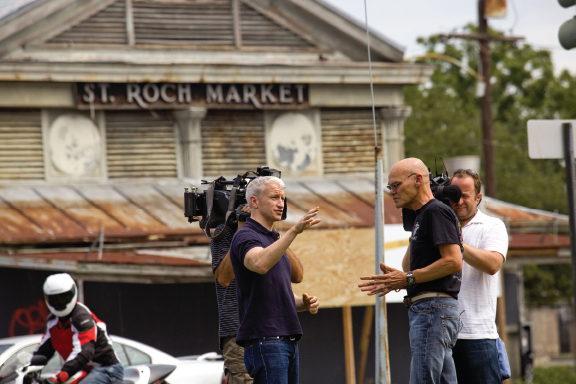Pundits, “Talking Heads,” and Politics

The transformation of TV news by cable—with the arrival of CNN in 1980—led to dramatic changes in TV news delivery at the national level. Prior to cable news (and the Internet), most people tuned to their local and national news late in the afternoon or evening on a typical weekday, with each program lasting just thirty minutes. But today, the 24/7 news cycle means that we can get TV news anytime, day or night, and constant new content has led to major changes in what is considered news. Because it is expensive to dispatch reporters to document stories or maintain foreign news bureaus to cover international issues, the much less expensive “talking head” pundit has become a standard for cable news channels. Such a programming strategy requires few resources beyond the studio and a few guests.
Today’s main cable channels have built their evening programs along partisan lines and follow the model of journalism as opinion and assertion: Fox News goes right with pundit stars like Bill O’Reilly and Sean Hannity; MSNBC leans left with Rachel Maddow and Lawrence O’Donnell; and CNN stakes out the middle with hosts that try to strike a more neutral pose like Anderson Cooper. CNN, the originator of cable news, does much more original reporting than Fox News and MSNBC and does better in nonpresidential election years. After dropping to a twenty-year audience low in 2012, CNN bounced back in May 2013, averaging 665,000 total viewers in prime time (compared to just 470,000 a year earlier). The highly political MSNBC, on other hand, went from averaging 817,000 total viewers in May 2012 to only 539,000 in May 2013. Fox News continued to lead cable prime-time news by a wide margin, averaging 1.9 million viewers per night in May 2013.39
Today’s cable and Internet audiences seem to prefer partisan “talking heads” over traditional reporting. This suggests that in today’s fragmented media marketplace, going after niche audiences along political lines is smart business—although not necessarily good journalism. What should concern us today is the jettisoning of good journalism—anchored in reporting and verification—that uses reporters to document stories and interview key sources. In its place, on cable and online, are highly partisan pundits who may have strong opinions and charisma but who may not have all their facts straight.